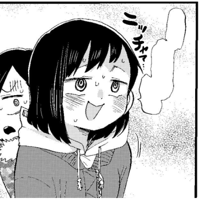Yamada Anna MBTI Personality Type
Personality
What personality type is Yamada Anna? Yamada Anna is an ENFP personality type in MBTI, 7w6 - sx/so - 792 in Enneagram, SCUAI in Big 5, IEE in Socionics.
She is the embodiment of inferior Si, her Fi aux gives her a good grasp on Fe but seems rather internaly focused for what she wants, Fe doms are the types to ask others what they like, she dosent seem like that. Also Se tert dosent fit her at all. Though she seems intuitive she dosent seem linear with it, her intuition isnt clear cut and in favour for the most likely possibility nor does she seem to look much forwards. People say the ENFP voters are just trying to look for the ENFP stereotype with her being bubbly, she cares for others but that dosent mean Fe dom. I disagree with the entire ENFJ stack it seems because she straight up seems to base herself of the ENFP way of navigating the world.
Biography
Related Personalities

Ichikawa Kyotarou

Yamada Anna Father

Sekine Moeko

Kobayashi Chihiro

Yoshida Serina

Yamada Anna mother

Ichikawa Kana

Honoka Hara
















